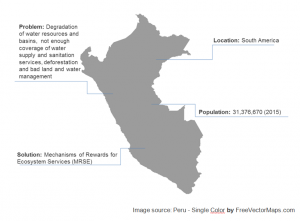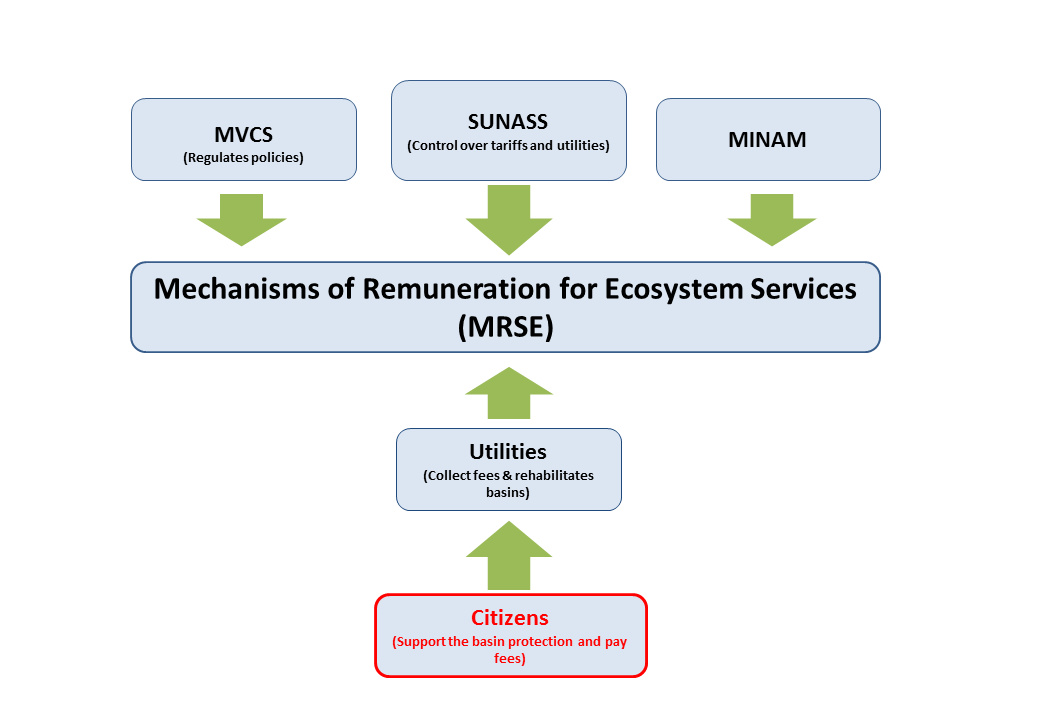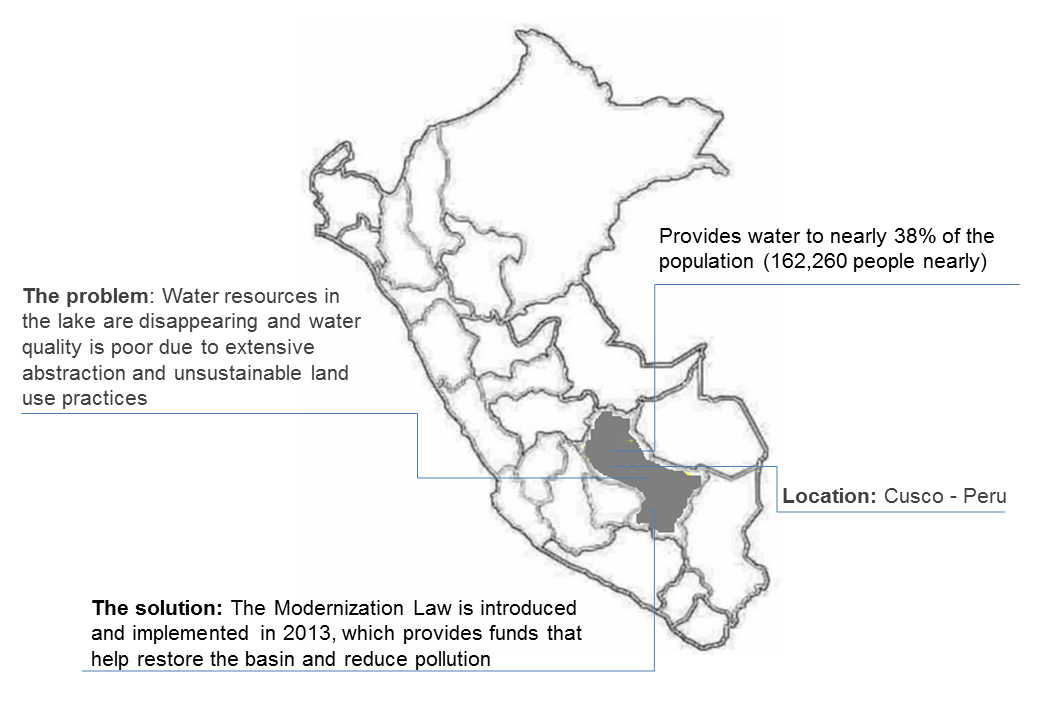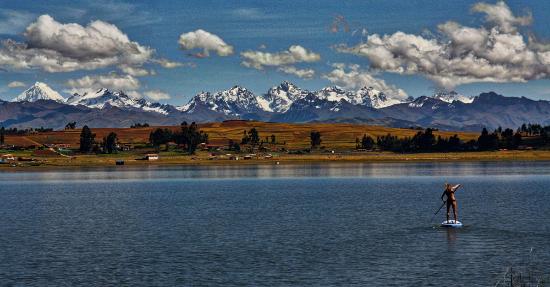The water regulator and basin connected cities
Over the past few years, water resources in Peru have been decreasing. Overpopulation, urbanization, infrastructure and climate change are some causes leading to water stress in the country. For example, the city of Lima, the country’s capital is one of the most water stressed cities in Peru (282 Million m3 of freshwater reserves). Water utilities and the government are taking urgent actions to secure water resources.
SUNASS, the national water regulator, together with water utilities and other stakeholders are working to introduce principles and practices to create water wise basins. Applying policies and laws to create economic instruments and financing mechanisms to protect and share water resources across the country’s water basins. Since the Mechanisms of Rewards for Ecosystem Services (MRSE) were introduced by SUNASS in 2013, different basins, both rural and urban, are being restored and consumers are becoming more involved and aware of the need to protect water resources.
1. The Problem
In Peru, there are more than 31 million people[1], of which 26% have no access to drinking water supplies or sanitation services[2]. In Lima, 6% of the population has no access to water, while in rural areas only 1 in 10 people have access to water supplies and sanitation services[3]. Supplying water and providing sanitation services in Peru is still a challenge for the National Superintendence of Sanitation Services (SUNASS) in Peru.
The main source of water resources in Peru are river and lake basins which start in the Andes. In Lima for example, more than 50% of the water comes from the Mantaro River through a transfer that crosses the mountain range, and the rest comes from Chillon, Rimac and Lurin river basins.[4] The ecosystems located upstream of these river basins are a source of the services that generates water, as basins, are being degraded by land change use like agriculture and cattle livestock, especially in large cities where population is rapidly growing. The use of fertilizers and chemicals in rural and mining areas, illegal waste dumping and infrastructure deterioration are also contributing to the degradation of basins. As a consequence, water quantity and quality is compromised, resulting in utilities needing to invest more in treatment techniques, chemicals and the expansion of treatment plants.
2. The solution
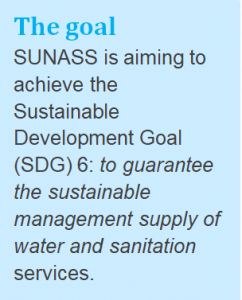 Since 2014, SUNASS in cooperation with the Ministry of Environment and water utilities has implemented a series of norms as part of the Mechanisms of Rewards for Ecosystem Services (MRSE) at basin and national level to mobilize funds from downstream users, through a percentage of the water tariff, to upstream providers for the conservation of water resources and the basins where they come from. The Framework Law for the Management and Supply of Sanitation Services was introduced in 2016, with the aim of regulating the provision and access on a national level to promote sustainable and quality services which protect the environment and the user. This law replaced the “Modernization Law for Utilities”, which was the law that introduced water utilities into MRSE schemes. Through the approval of the Law of Mechanisms for Ecosystem Services in 2014, MRSE was developed as a tool to generate financial and non-financial economic funds for the conservation and sustainable management of ecosystems that provide services. Under this general legal framework, the water and sanitation sector consolidated its specific legal framework.
Since 2014, SUNASS in cooperation with the Ministry of Environment and water utilities has implemented a series of norms as part of the Mechanisms of Rewards for Ecosystem Services (MRSE) at basin and national level to mobilize funds from downstream users, through a percentage of the water tariff, to upstream providers for the conservation of water resources and the basins where they come from. The Framework Law for the Management and Supply of Sanitation Services was introduced in 2016, with the aim of regulating the provision and access on a national level to promote sustainable and quality services which protect the environment and the user. This law replaced the “Modernization Law for Utilities”, which was the law that introduced water utilities into MRSE schemes. Through the approval of the Law of Mechanisms for Ecosystem Services in 2014, MRSE was developed as a tool to generate financial and non-financial economic funds for the conservation and sustainable management of ecosystems that provide services. Under this general legal framework, the water and sanitation sector consolidated its specific legal framework.
The Framework Law for the Management and Supply of Sanitation Services seeks to solve the problem around water supply, sanitation services and infrastructure and the protection of basins from further degradation. Through this law SUNASS aims to:
- Increase the coverage of sustainable and quality services for users at a national level and ensure the total access of population to drinking water and sanitation services.
- Promote environmental protection and social inclusion to improve the efficiency of utilities and sanitation services.
- Strengthen the regulator function of SUNASS at a national level and optimize their services
- Increase public investment in sanitation projects and to promote public and private cooperation to support the continuous work of utilities and water supply.
- Connect downstream (rural areas) with upstream water users (Cities)
The Framework Law for the Management and Supply of Sanitation Services provides a reference point for utilities on fees for water services. With these fees utilities are able to maintain their infrastructure and their source basins can be rehabilitated and sustainable management programs can be introduced. Consumers are paying for the water services which include hydrological ecosystem services and are directly involved in the catchment management process. Water tariffs are fixed by SUNASS, considering the needs of water supply companies to operate and maintain the water and sanitation infrastructure. A percentage of these tariffs will be invested to restore, protect and conserve the sources of water.
Mechanisms of Remuneration for Ecosystem Services (MRSE)
The Modernization Law for Water Utilities and the Framework Law for the Management and Supply of Sanitation Service are a series of norms which are part of Mechanisms of Rewards for Ecosystem Services (MRSE). The MRSE are tools created to finance conservation, rehabilitation activities and to promote the sustainable use of ecosystems. These mechanisms are facilitated through an agreement between contributory and retributory parts[5]:
- Stakeholders contributing to ecosystem services (contributors): individuals, public or private stakeholders that contributes to the conservation, rehabilitation and sustainable use of the natural resources.
- Stakeholders receiving benefits of ecosystem services (recipients): individuals, public or private stakeholders that provide a payment of reward to the contributory users after obtaining economic, social or environmental benefits from the natural resources.
Figure 1 depicts the collaborative work between the two groups of stakeholders. Both types of stakeholders work through a voluntary agreement (Acuerdo voluntario) whereas the stakeholders receiving the benefits of ecosystems services (beneficio) provide rewards (retribucion) to the stakeholders which contribute to ecosystem services. With these rewards the contributors to ecosystem services are able to conserve, recover and promote the sustainable use of the natural resources[5]. These rewards can be (but are not limited to): (1) community capacity building in agriculture, raising cattle livestock or other sustainable activities which do not impact ecosystem health; (2) building basic sanitation services with the condition that the degraded ecosystem is protected/restored (3) environmental education; and (4) providing technical capacity in sustainable tourism.
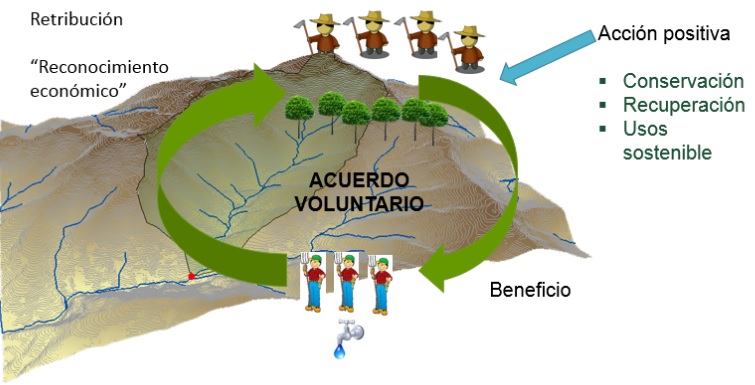
Figure 1: Scheme of the Mechanisms of Remuneration for Ecosystem Services (MRSE) (Minam – Peru, 2017)
2. 1 Implementation of the laws
To implement the MRSE, SUNASS works together with water utilities, companies, stakeholders, and communities across basins. SUNASS with water utilities review and update the water tariff structure every five years. This new water tariff will consider new investments and conventional/grey infrastructure, operation and maintenance of current grey infrastructure and also the implementation of MRSE the following is a description of the steps for the implementation of the MRSE.
- Water utilities, with the technical assistance of SUNASS, design a proposal for the Mechanisms for Rewards for the Ecosystem Services. This proposal includes: an assessment of the basin(s), which explains the link between the condition of the ecosystems with hydrological ecosystem services and sanitation services; an agreement between payers and providers; a monitoring system; and a dialogue platform between all the stakeholders of the MRSE.
- Based on this design plan, SUNASS evaluates what percentage of the water tariff will be used to implement the MRSE, and at the same time SUNASS offers the utilities recommendations for good practice.
- SUNASS will publically present a proposal of the new water tariff structure and request public recommendations by citizens in the community.
- Based on public opinions, SUNASS creates a final document for the final tariff which includes the fees for the Mechanisms for the Remuneration for the Ecosystem Services.
- To ensure the correct implementation of the law and its control and maintenance, it is necessary to create a group of specialists with technical and financial knowledge to support and monitor the project.
- A monitoring system is developed for follow up actions and initiatives taken by utilities and users.
2.2 The Framework Law for the Management and Supply of Sanitation Service, what it offers[6]?
 Strengthen the economic power of utilities: they can now take decisions at economic, financial and environmental levels.
Strengthen the economic power of utilities: they can now take decisions at economic, financial and environmental levels.- Integration of utilities: at national, local and basin level utilities work together to provide better services and increase the coverage of services.
- Policies for tariffs: SUNASS is the only economic regulator in water and sanitation services at national level.
- Environmental management: new water treatment technologies are implemented, water reuse is encouraged and pollution of the catchment is reduced.
- Strengthen the management of utilities: at national level they provide technical assistance, innovation and technology transference to create and enhance capacity.
- Broaden SUNASS tasks: SUNASS not only acts as a regulator at national level, but also evaluates and supervises utilities and their functions.
- Strengthen the OTASS: providing technical assistance to utilities, advise local stakeholders in transitorily positions, promote the integration of utilities, and increase the number of physical locations to create decentralization of services.
- Connect cities with their water resources: People living in urban areas are understanding where the water comes from and also connecting their needs with interests of local communities living upstream of the basins.
2.3 Participants
The successful implementation and outcome of these laws, is based on collaboration between utilities, stakeholders, water organizations, communities, citizens and government agencies. Each participant has a role to play to successfully achieve the goals of the Framework Law for the Management and Supply of Sanitation Services.
- SUNASS: Has control over tariffs and utilities. Regulates fees for water supply and sanitation services, supervises and audits the quality of services and the correct execution of laws.
- Ministry of Housing, Construction and Sanitation (MVCS): Designs, monitors and regulates policies at basin and national level. Provides licenses for utilities to perform sanitation services. Works in cooperation with municipalities. Approves policies and oriented plans to achieve objectives.
- Technical Organization for the Administration of Sanitation Services (OTASS): Enforces the law application between the utilities. Creates support groups for the implementation of the law at basin level in cooperation with rural organizations.
- Utilities: Use collected fees from supplied water services to expand infrastructure capacity for both water supply and sanitation services and networks. Collects financial support from stakeholders, organizations and government to implement rehabilitation projects. Provides water supply and sanitation services.
- Ministry of Environment (MINAM): It promotes public and private investment in natural infrastructure, and provides the policy for it. Manages MRSE registration nationwide.
- Local governments and municipalities: Finance the implementation of technical programs focused on sustainable rural sanitation services. Give priority to sanitation projects in small communities and cities. Co-financing on the rehabilitation and maintenance of the sanitation structures and monitor the state of the sanitation services at basin level.
- Citizens: Support the protection of the environment services and basins by monthly paying their fees for water supply. The collected fees are stored trust funds that SUNASS will direct into the rehabilitation and maintenance of basins and infrastructure. Additionally, citizens are taking part in education programmes for sustainable land and water use and the protection of basins, to reduce the threats to water resources and environment.
- Others: Non-government organizations provide support, funding and advice during the implementation process of the law in the pilot basins and in a later stage in major cities.
2.4 Case study: Piuray Lake in Cusco (Pilot Basin)
The Piuray Lake is located at 3435 meters above sea level in Cusco, Peru. It has a perimeter of 8750 m and a depth of 20 to 50 m. For more than 50 years this lake has been the main source of water for 38% of the inhabitants in the city of Cusco (Cusco has a population of 427,000 inhabitants[7]). In 1998, problems related to overexploitation, inadequate management of water resources and unsustainable land practices promoted conflicts between rural communities and utilities (SEDACUSCO). The water resources at the lake were reduced from 100% in 1980 to 40% in 2014[8] setting the water resources in the lake at risk of depletion. Other issue affecting the lake was water quality that did not only have impact on population but also in the treatment plans for SEDACUSCO. Rural communities attributed this to the over abstraction by the utility and the lack of infrastructure for water treatment. Communities demanded for a solution from the government. The solution arrived later in 2013 with the introduction of the Modernization Law for Utilities. SUNASS works together with the utilities and other stakeholders in the catchment, creating projects for environmental compensation and rewards, initiating projects on the catchment to optimize operations in the treatment plants and increase the quality of water for end-users. Furthermore, SEDACUSCO completed different studies for water fees, estimating a percentage of the water service fees of 4.8% and 4.2% to be taken during 2013 – 2018. The fees for water services were immediately accepted by the rural communities and urban area consumers, as their main concern is to ensure the continuous water supply in the region and protect the Piuray Lake. During this five year tariff increase, fees are to be designated for projects related to the basin, green infrastructure, and sanitation services in the community.
Since the introduction of the Mechanisms of Rewards for Ecosystem Services (MRES), utilities have been collecting fees for water use and allocating them to different projects for the recovery and rehabilitation of the basin. During the first phase of the programme, fees and investments were allocated for projects focused to increase the water quality at the lake and at the same time the quality of life for people in the community of Piuray – Ccorimarca, by implementing sanitation and water supply networks. In the second phase of the programme, fees will be used in land conservation projects, land and water use, and design and use of hydrologic monitoring systems.
Not only have consumers and utilities shown support for this economic and financing mechanism, its success in the region has also served to promote stakeholders and private companies to engage in this process. Furthermore, it has motivated the improvement rural sanitation with the construction of a waste water treatment plants and provide economic support with local sustainable practices to secure the water resources and mitigate possible droughts[8].
The MRSE has created awareness in the region, not only among water utilities and their customers but also in the industrial and commercial sectors for whom the Piuray Lake has become a priority. Such is the success of this law that based on studies undertaken by a National University (Universidad Nacional Mayor de San Marcos), the urban and rural users show willingness to pay 8% more per year for the protection and rehabilitation services in the basin[9]. However, the major success of this law is the impact on the water utilities in the area (SEDACUSCO), which has created awareness and has greatly encourage them to continue with the protection and preservation of the basins.
Read more about the case studies on water tariffs at the Piuray Lake here. (Spanish only)
Read more about the pilot basins here. (Spanish only)
3. The Outcomes
Results in the implemented pilot basin are not immediate. Citizens in urban areas have shown support to the law by paying their fees on time. With the collected fees the utilities have improved and introduced sanitation services to communities, installed toilets and latrines in rural areas, rehabilitated basins and implemented programs for organic agriculture to educate citizens and reduce the amount of nitrate and phosphate in water[10]. At the moment, utilities are in the second phase of the project, using fees to design projects for green infrastructure.
In urban areas, such is the case of Cusco and the Piuray Lake, this initiative has been well received by the citizens. Cusco citizens and communities around the lake agree and support the labour and work of SUNASS and utilities to recover and reduce the damage in the lake produced by past projects.
In larger urban areas as in Lima, SUNASS and utilities (SEDAPAL) have recognized threats to the water quality and quantity in their catchments (Chillon, Rimac, Lurin and high Mantaro Basins), including soil erosion, overuse of water resources, high water treatment costs, etc[11]. To reduce the threats and their impacts, the water utilities have introduced for the first time an optimized plan that is running from 2015 to 2020 which seeks to create reserves to protect basins and at the same time to guarantee the availability of the water resources[12] .
It is important to recognise the Moyobamba case as a first pilot of MRSE that was started in 2007 prior to the establishment of a legal framework. This first pilot was the basis to construct the laws and norms of MRSE in the water sector. In Moyobamba, the MRSE has been implemented from 2008, and since then 153 hectares of forest have been restored In the Mishquiyacu, Rumiyacu and Almendra basins (which provides 80% of water for the population in the city). The success in Moyobamba is such that they will keep collecting fees from 2015 to 2020 to continue with the reforestation and conservation projects of basins.
From 2013 to 2017, with the Modernization Law for utilities the MRSE has been implemented in pilot basins in the following regions: Moyobamba (considered as the first MRSE of Peru), Cusco, Apurimac, San Martín, Lima, Junín, Amazonas, Ayacucho, Pasco, Huánuco, Loreto y Ancash, and soon will be introduced in Rioja, Andauyalas, Madre de Dios, Moquegua, Piura, Ica, among others.
3.1 Unique aspects
Payment for Ecosystem Services (PES) is a system widely used by utilities and other governmental organizations, to collect financial funds to protect the water resources source (catchments). Implementing the PES can be difficult as there is much need to monitor the system, schemes and as well with the enforcement of laws[13].
Nevertheless, SUNASS seems to have taken the right approach and together with the utilities in Peru are working on monitoring and enforcing the new law. This law is not only unique because of its success inside pilot basins, but because it has achieved to work together with rural and urban areas, where urban users pay fairly for the water resources and rural users benefit from collected water fees by maintaining basins, water quality and quantity and obtaining sanitation services and water networks. Furthermore, this law has created awareness to public and consumers on the need to invest and conserve their river and lake basins. Consumers are engaged in contributing to the restoration and sustainable management of basins; this was shown by the acceptance of the law and new water tariffs that are being paid without delay or complaints.
3.2 What went wrong, reasoning and challenges
The Ministry of Housing, Construction and Sanitation (MVCS) affirms that between 2009 and 2014 they transferred more than 18,000 Million PEN (circa 5, 5 Million USD) to execute projects in sanitation, however, the quality of the services are improving at a slow pace. Problems around basins are large and the investment is still too small. However, these challenges are expected to improve as the MRSE is further introduced in the country and continues to engage users. To-date 4 million Peruvians have no water supply or sanitation services.
Implementing a law that requires citizens to work together with utilities and governmental entities requires a lot of effort and brings forth many obstacles. One of the main issues is the reduced knowledge on ecosystem services, their uses and value. To correctly create conservation programs, it is necessary to first understand what is needed to obtain benefits from the ecosystems without putting them at risk. It is also difficult to create understanding and support from the public. Involving each citizen in the conservation of their basins at their own cost is a very complicated task.
3.3 Gaps (questions)
There are still many questions about the implementation of this law. These questions involve big basins and cities, like Lima, where populations are larger and issues more complex[14]. How can the MRSE become more sustainable? Is there a better plan to protect water resources? How can the funds from utilities be better used to solve the issues around the basins? And finally is it possible to know what the impacts will be in a long term? SUNASS is currently working together with water utilities and other public Institutions, to answer these questions.
4.0 Useful Links and References
Useful Links:
http://www.sunass.gob.pe/fiar/exposiciones/fernando_momiy.pdf
http://www.sunass.gob.pe/websunass/index.php/eps/sunass-comprometida-con-el-cuidado-de-las-fuentes-de-agua
http://forest-trends.org/blog/2016/07/27/peru-approves-new-innovative-environmental-policies/
http://busquedas.elperuano.com.pe/normaslegales/aprueban-el-reglamento-de-la-ley-n-30045-ley-de-modernizac-decreto-supremo-n-013-2016-vivienda-1408435-1/
http://waterfunds.org/sites/default/files/tnc-peru-tariff-english.pdf
References:
El Peruano (2016). Aprueban reglamento de la ley #30045, Ley de Modernización de los Servicios de Saneamiento. http://busquedas.elperuano.com.pe/normaslegales/aprueban-el-reglamento-de-la-ley-n-30045-ley-de-modernizac-decreto-supremo-n-013-2016-vivienda-1408435-1/. Website accessed on 15th June, 2017
Del Mar Ugarte Abogados (2015). https://delmarugarteabogados.wordpress.com/2015/09/29/modificacion-de-la-ley-n-26338-ley-general-de-servicios-de-saneamiento-y-la-ley-n-30045-ley-de-modernizacion-de-los-servicios-de-saneamiento/. Website accessed on 15th June, 2017
Forest Trends (2016). Peru approves new innovative environmental policies http://forest-trends.org/blog/2016/07/27/peru-approves-new-innovative-environmental-policies/. Website accessed on 15th June, 2017
IPSOS (2017). El privilegio de tener agua. https://www.ipsos.com/es-pe/el-privilegio-de-tener-agua?language_content_entity=es-pe. Website accessed on 15th June, 2017
La Republica (2013). Ley de servicios de saneamiento apunta a privatizar empresas de agua. http://larepublica.pe/30-06-2013/ley-de-servicios-de-saneamiento-apunta-a-privatizar-empresas-de-agua. Website accessed on 15th June, 2017
Lucich, L. I.M., Carbajal, N.M.C. (2016). Valor de la conservación de la fuente de agua y de los atributos del servicio de abastecimiento de agua de SedaCusco: Una aproximación empleando experimentos de elección. Instituto de Investigaciones Económicas, Universidad Nacional Mayor de San Marcos. Lima- Perú
Momiy Hada, F. (2015). Contribución de la regulación a la gestión sostenible de los recursos hídricos: Caso Perú. http://www.sunass.gob.pe/fiar/exposiciones/fernando_momiy.pdf. Website accessed on 15th June, 2017
Propuesta (2013). Modernización de los servicios de saneamiento. http://edicionespropuesta.blogspot.nl/2013/06/nueva-ley-de-modernizacion-de-los.html. Website accessed on 15th June, 2017
SUNASS (2017). SUNASS comprometida con el cuidado de las fuentes de agua. http://www.sunass.gob.pe/websunass/index.php/eps/sunass-comprometida-con-el-cuidado-de-las-fuentes-de-agua. Website accessed on 15th June, 2017
Valorando la Naturaleza (2014). Perú hacia un nuevo sistema de saneamiento hidrológico. http://www.valorandonaturaleza.org/noticias/per_hacia_un_nuevo_sistema_de_saneamiento_hidrolgico. Website accessed on 15th June, 2017
Key Words
| Peru | Infrastructure | Economic instruments | Policies |
| Sanitation | Planning | Water quality | Law |
| Water Supply | Utilities | Ecosystem services | Basin |
